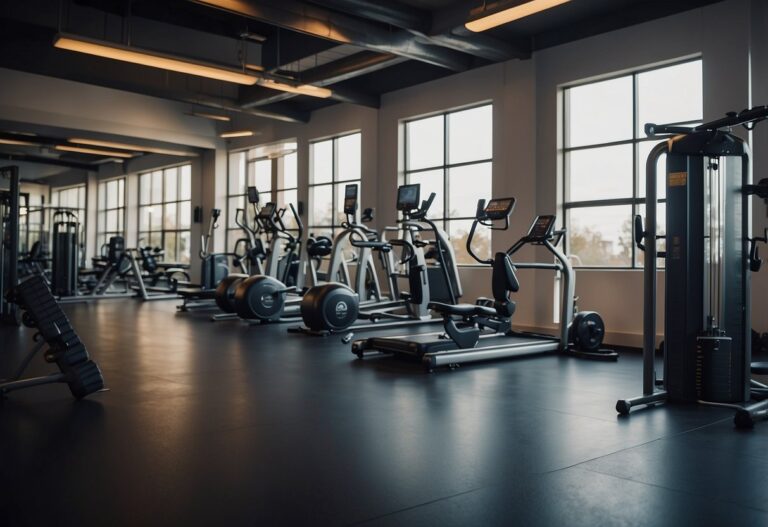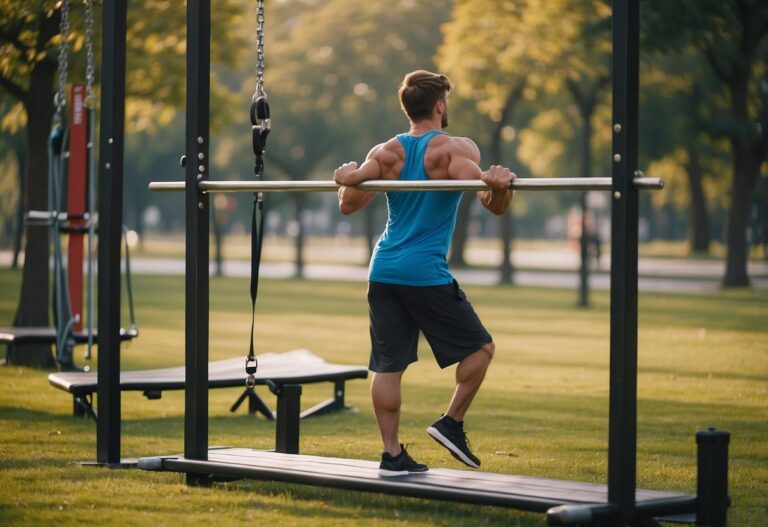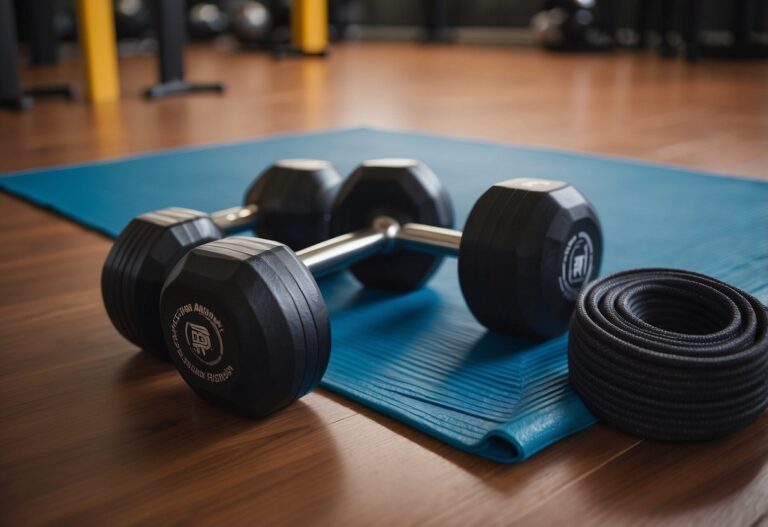Living with ADHD can often make it challenging to maintain a regular exercise routine, but there are strategies that can help you stay on track. Incorporating exercise into your routine can significantly improve your focus and mental clarity. It’s not just about physical health; it’s also about finding activities that you enjoy and that fit your lifestyle.

Understanding your unique needs and preferences is key to finding the right workout plan. Whether you prefer the structure of a gym or the flexibility of outdoor activities, there are plenty of options to explore. By making exercise a fun and integral part of your day, you can manage ADHD symptoms more effectively.
Morning Cardio Routine
Starting your day with a morning cardio routine can set a positive tone. It doesn’t have to be long or intense. Even just 10 to 15 minutes can make a difference.
You might try jogging or running around your neighbourhood. If running isn’t your thing, consider dancing to some upbeat music. Jumping rope is another excellent option that gets your heart pumping quickly.
For those who prefer a more structured activity, swimming laps is very effective. Swimming also provides a full-body workout that’s gentle on the joints.
Don’t forget to lay out your workout clothes the night before to make your morning easier!
Strength Training Schedule

Strength training is very important for managing ADHD. It helps improve your focus and energy.
Start with basic exercises like bench press, deadlifts, or squats. Do 5 sets of 5 reps with a weight you can lift safely. Make sure you keep good form.
Consistency is key. Try to follow a regular schedule, but allow yourself flexibility. This helps to ensure you stick with it long-term.
You could exercise in the morning one day and in the evening the next. Just make sure you find a time that works best for your routine and energy levels.
Remember, it’s about progress, not perfection!
Yoga for Focus and Relaxation
Yoga can be a great way to help manage ADHD. It combines physical activity with mindfulness, which can improve concentration and reduce hyperactivity.
Try starting with simple poses like Tree Pose. Stand with your feet hip-width apart, place the sole of one foot on your inner thigh, and focus on balancing. This pose can improve your focus and stability.
Downward-Facing Dog is another beneficial pose. Begin on your hands and knees, then lift your hips to form an inverted V-shape. This pose can help with relaxation and flexibility.
Yoga involves controlled breathing exercises that promote calmness. Deep, mindful breaths can reduce anxiety and help you stay centred.
Regular practice can lead to noticeable improvements in both focus and relaxation for people with ADHD. Consider including yoga as part of your daily routine. It’s an easy and effective way to manage symptoms naturally.
High-Intensity Interval Training (HIIT)
High-Intensity Interval Training, or HIIT, is a great way to stay active when you have ADHD. It involves short bursts of intense exercise followed by brief periods of rest or lower-intensity activity. This keeps your workouts exciting and can help you stay focused.
You can do HIIT workouts almost anywhere, making it convenient. For instance, try Tabata training: 20 seconds of maximum effort followed by 10 seconds of rest, repeated for four minutes.
HIIT workouts are also versatile. They can include sprints, jumping jacks, or even bodyweight exercises like push-ups and squats. When you’re short on time, HIIT can offer a quick and efficient workout that suits your needs. Learn more about starting with HIIT.
Mindful Breathing Exercises
Mindful breathing exercises can help you stay calm and focused during your workouts. Simple techniques like deep breathing are great for relaxing the mind and body.
For a start, try the 4-7-8 breathing technique: inhale for 4 counts, hold for 7 counts, then exhale for 8 counts. It’s a simple yet effective way to reduce stress.
Another method is box breathing. Inhale for 4 counts, hold for 4 counts, exhale for 4 counts, and hold again for 4 counts. This pattern helps synchronise your breath, calming both mind and body.
Outdoor Running Sessions

Running outdoors can be a great way to manage ADHD. You get fresh air and a change of scenery, which can be refreshing for your mind.
Morning runs are ideal. Starting your day with a run helps you avoid distractions that build up later. It can be tough to find time once your day gets busy.
Consider keeping your running gear in one place. This helps you get out the door quickly. You won’t waste time looking for shoes or a jacket.
Explore different routes to keep things exciting. Running the same path can become boring. Different terrains challenge your body and your mind.
Try setting small goals. Aim for a certain distance or time. This can keep you motivated and give you a sense of achievement.
If you struggle with focus, running with a friend might help. It adds social interaction and accountability. You can also join a local running group.
Remember, exercise doesn’t have to be traditional. You can incorporate other forms of movement like walking or hiking. The key is to keep moving and enjoy the process.
Make sure to listen to your body. Take breaks if needed and don’t push too hard. The goal is to have a consistent routine that you look forward to.
Swimming Laps
Swimming laps can be a fantastic workout, especially if you have ADHD. The rhythm of swimming can help keep your mind focused and calm.
Start by setting small goals, like swimming 5-10 laps. This keeps things manageable. You can gradually increase the number and length of your sessions as you become more comfortable.
Using tools like pull buoys can be helpful. They keep your body afloat and let you focus on your swimming technique, making your workouts more effective and enjoyable.
Remember to always warm up your muscles to prevent injury. Simple stretches or an easy swim can do the trick.
Cycling Routes

Finding the right cycling routes is key to managing your ADHD. Start with familiar paths around your neighbourhood. Knowing your route can help reduce anxiety and make the ride more enjoyable.
Explore parks and trails. Green spaces offer a relaxing environment and a break from the city’s hustle and bustle. For example, riding through your local park can boost your mood and concentration.
Try different terrains. Mix up your routine with a combination of flat roads and hilly trails. This keeps the ride interesting and challenges different muscle groups, adding variety to your workout.
Dance Classes
Dance classes can be incredibly beneficial if you have ADHD. They offer a fun way to stay active and can improve your focus.
The rhythmic movements can act as an anchor for your mind, helping you manage symptoms. Plus, the structured environment of a class can help you build discipline and routine.
Additionally, dance improves motor coordination and confidence. As you learn new moves, you’ll find your memory and concentration getting a workout too. Dance classes can also help boost dopamine, a brain chemical often low in people with ADHD.
Consider joining a local class or exploring online options to get started.
Martial Arts Training
Martial arts can be an excellent workout if you have ADHD. It combines physical activity with mental focus. While practising moves like kicking, blocking, and punching, you stay engaged and active.
Many people find martial arts helps with focus and self-control. For example, Tai Chi is known for its slow, gentle movements which can help you relax and improve your concentration. Activities like karate or judo also provide a structured environment that can reduce fidgeting by keeping your body busy.
If you enjoy being part of a group while still focusing on personal goals, martial arts might be a great fit. Each student works on their skills individually, but there’s a sense of community as well. You will gain training partners who can support and motivate you.
Remember, martial arts is not just about fighting. It’s about discipline, focus, and self-improvement. Give it a try, and you might find it helps you manage your ADHD symptoms effectively while also keeping you fit. If you need more information, check out this article for more insights on how martial arts can support ADHD management.
The Importance of Exercise for ADHD
Exercise is vital for managing ADHD, offering substantial mental and physical health benefits. By incorporating regular physical activity into your routine, you can see improvements in focus, mood, and overall well-being.
Mental Health Benefits
Exercise can significantly improve your mental health if you have ADHD. Physical activity promotes the release of dopamine, norepinephrine, and serotonin in the brain, which are chemicals that enhance attention and focus. Engaging in activities like running, swimming, or cycling can help reduce symptoms of inattentiveness and hyperactivity.
Additionally, exercise can help alleviate anxiety and depression often associated with ADHD. A routine that includes regular exercise can create a sense of structure and predictability, which is beneficial for managing ADHD symptoms. Engaging in physical activities outdoors, such as hiking or playing sports, can be particularly effective, as nature has a calming effect on the mind.
Physical Health Benefits
The physical health benefits of exercise are also notable for those with ADHD. Regular physical activity can help manage weight, improve cardiovascular health, and increase energy levels. Exercise can help you maintain a healthy lifestyle, which is crucial for overall functioning and well-being.
Moreover, an active lifestyle can lead to better sleep patterns. People with ADHD often struggle with sleep issues, and regular exercise can promote better sleep by regulating the body’s internal clock. Activities that require coordination, such as team sports or dance, can also improve motor skills and reduce fidgetiness. Engaging in physical activities that you enjoy can make it easier to stick to a workout routine and see consistent benefits.
Types of Workouts Suitable for ADHD
Finding the right workout can help manage ADHD symptoms effectively. Different types of exercises offer various benefits, whether they are cardiovascular activities, strength training, or mind-body practices. Below, we break down these workouts to help you find the best fit.
Cardiovascular Exercises
Cardiovascular exercises, like running, cycling, and swimming, are excellent for maintaining focus and managing ADHD symptoms. These high-energy activities increase your heart rate, pumping more oxygen to your brain and improving overall brain function.
Running is great because it can be done almost anywhere, and it requires minimal equipment. It’s a powerful tool to reduce stress and improve concentration.
Cycling offers a fun way to enjoy nature.
Swimming combines physical activity with the calming effect of water, which can be particularly soothing for people with ADHD. Plus, it’s a full-body workout that helps in building endurance.
Strength Training
Strength training includes activities like weightlifting, CrossFit, and bodyweight exercises. These workouts are beneficial because they require focus on form and technique, which can help in improving concentration and reducing impulsivity.
Weightlifting involves lifting weights in a controlled manner. It helps build muscle and improve mental discipline. You can start with lighter weights and increase as you get stronger.
CrossFit is a high-intensity workout that’s varied and dynamic. It fosters community spirit and can be particularly motivating for people with ADHD.
Bodyweight exercises like push-ups, pull-ups, and squats are convenient as they don’t require any equipment and can be done at home. These exercises improve strength and endurance without the need for a gym.
Mind-Body Activities
Mind-body activities such as yoga and tai chi are calming and help with focus and emotional regulation. These activities integrate physical movement with mental focus, which is beneficial for managing ADHD symptoms.
Yoga practices include poses, breathing exercises, and meditation. These elements together help reduce anxiety and improve attention span. You can start with basic poses and progress as you become more comfortable.
Tai chi is a form of martial arts that involves slow, deliberate movements. It enhances balance, coordination, and relaxation. The rhythmic and repetitive nature of its movements can be particularly effective in calming a racing mind.
Incorporating a variety of these workouts can help you find the most enjoyable and effective ways to manage ADHD symptoms and improve overall health.
Creating an ADHD-Friendly Workout Routine
When building a workout routine that’s ADHD-friendly, focus on setting achievable goals, adding variety to avoid boredom, and using technology to stay organised and motivated.
Setting Realistic Goals
Start by setting small, achievable goals. It’s easy to get overwhelmed with grand plans. Think about what you can realistically accomplish in a week. For example, instead of aiming to run a marathon right off the bat, set a goal to run or walk for 15 minutes a few days a week.
Breaking down larger goals into smaller, manageable tasks can make the process less daunting. Write down these goals and check them off as you achieve them. This gives a sense of accomplishment and keeps motivation high. Remember, consistency is more important than intensity, especially at first.
Incorporating Variety
Variety is key to keeping your workouts engaging. Try different types of exercises to see what you enjoy most. This might include anything from yoga and cycling to dancing or using a VR headset for fitness games. Incorporating different activities prevents boredom and helps you stick with your routine.
Changing up your workouts also challenges your body in new ways, which can improve fitness levels without feeling repetitive. Create a schedule that allows you to try different exercises throughout the week. Some days, you might go for a jog, while on others, you might do a yoga session or a dance class.
Using Technology to Stay on Track
Technology can be a fantastic tool to help you stay committed and organised. Use apps that let you set reminders for your workouts or track your progress. There are many fitness apps specifically designed to be ADHD-friendly, offering plans that can be adjusted based on your needs.
Consider using a smartwatch or fitness tracker to keep a record of your activity levels. For example, setting up reminders on your phone or watch to move every hour can help you stay active. Additionally, fitness games on a VR headset can make exercise more fun. By engaging with technology, you can make workouts less of a chore and more of an enjoyable activity.







